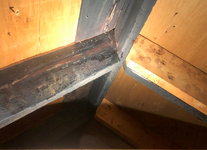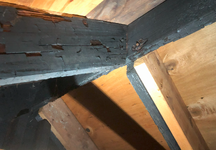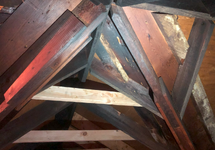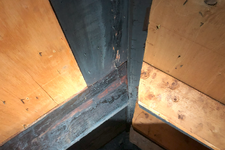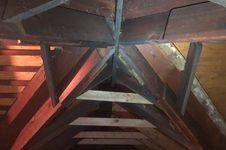zero1238
Structural
- Oct 6, 2017
- 73
I recently inspected some fire damage in the attic of a very old home. The roof was framed with 2"x6" rafters at 20" on center with a single 2"x6" ridge. On one side of the roof, there was apparent fire damage with some of the rafters and the ridge experiencing charring. I can see the rafters being easily sistered but I'm not quite sure what to do with the ridge. It would be extremely difficult to replace it but sistering it also doesn't seem ideal since the integrity is somewhat lost. Open to any suggestions on this one as I want to take constructibility into account.

